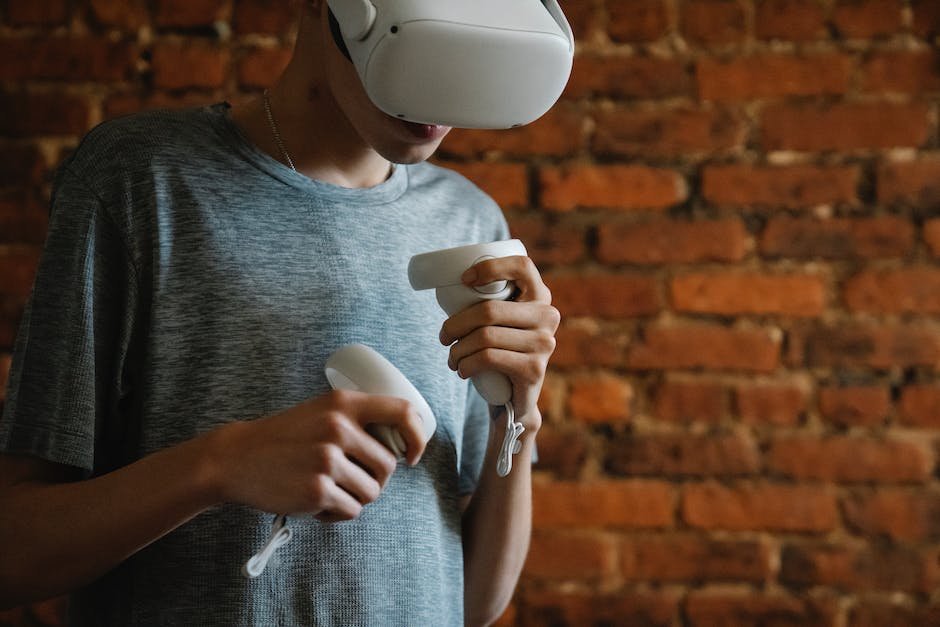Stepping into the world of Augmented Reality (AR) is like unlocking a door to a whole new dimension, where physical and digital entities seamlessly coexist and interact in extraordinary ways. AR, a technology that integrates digital information into the user’s environment in real-time, provides a unique experience that enhances our perception of reality. This immersive technology blurs the border between the physical world we know and the digital world we’re exploring. By overlaying or mixing digital content onto the real world, AR creates a holistic and interactive experience that’s both captivating and pragmatic. From simple smartphone applications to complex industrial systems, AR is steadily transforming the way we live, learn and work.
Defining Augmented Reality
Understanding Augmented Reality
Augmented Reality, often abbreviated as AR, is a technology that superimposes a computer-generated image on a user’s view of the real world, creating a composite view. It blends digital components into the real world, enhancing what we see, hear, and feel. Unlike Virtual Reality (VR) that creates a totally artificial environment, AR uses the existing environment and overlays new information on top of it.
AR works by employing a range of sensors (including a camera), computer components, and algorithms to determine the position and orientation of a digital object in relation to its real-world surroundings. The components involved include a processor, a display, sensors and input devices. Among these elements, sensors and cameras collect a user’s interaction data and the processor computes it to make it a seamless AR experience.
AR can be experienced through devices such as smartphones, tablets, smart glasses, and AR headsets. These devices utilize a software application to identify a specific trigger image or location. Once the device recognizes the trigger, it overlays digital data – animations, videos, sounds, 3D models – onto the physical world.
Historical Development of Augmented Reality
The concept of AR was first introduced in the 1960s by Ivan Sutherland, the “father of computer graphics.” His development, known as the “Sword of Damocles,” was a primitive form of virtual reality and augmented reality. The modern concept of AR came into public consciousness in the 1990s, with the term “augmented reality” being coined by Tom Caudell, a researcher at Boeing.
The first functional AR systems started to appear in the late 1990s and early 2000s, with the invention of ARToolKit – an open-source library that allowed developers to create AR applications. Major technological strides in the 2010s, especially advancements in smartphone technology, brought AR to the hands of consumers. In 2016, the mobile game Pokémon Go exploded in popularity, demonstrating the potential of AR applications.
Exploring Augmented Reality in Daily Life
Augmented Reality or AR is a prevalent technology that has seamlessly woven into our routines, often without us noticing. Everyday applications such as Instagram and Snapchat, which use filters to superimpose digital masks on users’ faces, are examples of how we use AR. Another powerful example is Ikea’s AR app, which allows us to envision how furniture would fit and look in our homes before making a purchase.
Enhancing navigation and maps, AR visually presents directional information and business details, enriching our journeys. AR surges even further with Google Lens, offering search results based on the visual input from your phone’s camera. It has also impacted the world of e-commerce, with virtual trial options for a wide range of products, including clothing, makeup, furniture, and appliances.
Educational sectors can greatly benefit from AR technology, transforming teaching and learning experiences. Concepts that seem complicated can be simplified using interactive AR models in disciplines like science and history. This illustrates the immense space for potential growth and the boundless scope of AR applications, limited only by our imaginations.

The Technology behind AR
Diving Deeper into Augmented Reality (AR) Technology
Commonly known as AR, Augmented Reality is a sophisticated technology that superimposes digital information or graphics onto the user’s view of their surrounding environment. The intricate interplay of hardware, software, and algorithms forms the crux of AR, ensuring a flawless amalgamation of the digital and physical realms. To experience AR, devices such as smartphones, tablets, and AR glasses can be used.
AR Hardware
Hardware is a significant component of AR technology. The devices used are equipped with sensors, cameras, accelerometer, gyroscope, digital compass, GPS, and CPU. Sensors and cameras scan and collect data about the user’s interaction with the surrounding environment. This data is then sent to the processor (CPU) for interpreting and generating relevant AR content. Other components like accelerometer, gyroscope, and digital compass are used for tracking orientation and movement. One of the most recognizable pieces of AR hardware is Google’s Glass, a wearable AR device.
AR Software and Algorithms
The software and algorithms play a vital role, creating the visual overlay and anchoring digital data to specific points in the physical world. AR software, for instance, the ARKit for iOS and ARCore for Android, among others make AR accessible on smartphone devices. The software uses complex algorithms to interpret the sensor data and accurately map digital images to the real world.
Marker-based (Image Recognition) and Markerless (Location-based) tracking are two common types of AR. Marker-based AR uses pre-defined markers to overlay digital information when the marker is recognized by the AR device. The Markerless tracking uses GPS, accelerometer and velocity meter to provide data based on location.
Evolution of AR Technology
AR technology has evolved rapidly in the past decade. From military applications in the 1990s for enhancing navigational capabilities of soldiers, AR transitioned to commercial and educational applications. Google’s Project Tango pioneered the use of depth sensors for enhancing AR experiences. It evolved into ARCore, Google’s platform for building AR experiences. Similarly, Apple’s ARKit has been instrumental in making AR mainstream on iOS devices.
The accessibility and affordability of smartphones and AR-compatible devices have accelerated the adoption of AR technology.
Challenges in AR Technology Development
Despite significant advancements, challenges remain in perfecting AR technology. User-experience related challenges, such as latency issues, cause discrepancies between real and digital interactions. Solving this requires a tremendous computational power and optimized algorithms.
A major technological challenge is achieving ‘Depth perception’, crucial for AR devices to correctly interpret distances of physical objects and overlay digital content accordingly. Also, the development of highly immersive wearable AR devices continues to be an ongoing challenge due to issues on the hardware front, such as limitations in field-of-view, device weight, and battery life.
Augmented Reality: The Future
The future of Augmented Reality, or AR, is being shaped by rapid advancements in artificial intelligence and machine learning. These technologies are driving AR to evolve into a more intuitive and personalized tool. Moreover, the incorporation of 5G and edge computing technologies is expected to resolve habitual latency issues. Simultaneously, advancements in semiconductor technology are dramatically reducing the size of AR hardware, making it more accessible and setting the stage for an exciting future in this field.

Applications of Augmented Reality
Augmented Reality and Its Impact on Education
AR technology has the potential to transform educational experiences, propelling them beyond traditional methodologies. This innovation is being harnessed by schools and other educational institution to foster a more engaging and interactive learning environment. Through AR, students can explore complex concepts such as three-dimensional shapes in geometry, virtually dissect and examine biological images, and even take a virtual tour of historical sites without stepping away from their classroom. Apps like Microsoft’s HoloLens and Google Expeditions have started to exemplify these possibilities, offering students an immersive, AR-integrated learning experience.
Augmented Reality and Healthcare
In healthcare, augmented reality serves many beneficial purposes such as visualizing medical data, training medical professionals, and enhancing patient care. AR can provide doctors with real-time, 3D imaging of a patient’s body during surgical procedures, greatly increasing precision and efficacy. Google Glass, for example, provides surgeons with patient vital information during surgery without looking away. AR can also be used to generate 3D renditions of MRI and CT scans, helping doctors diagnose more effectively. Moreover, AR virtual training for medical students and professionals can supplement traditional learning and provide hands-on experience in a risk-free environment.
Military Applications of Augmented Reality
The military sector is also leveraging augmented reality for training, reconnaissance, and battlefield visualization. Personnel can use AR for simulated combat scenarios, creating a safe environment to practice strategies and decision-making skills before facing real fights. With AR, soldiers can also view maps and terrain data overlaid onto the physical environment, increasing situational awareness. Devices such as the HoloLens 2 Industrial Edition by Microsoft are being used by the U.S. Army to offer soldiers better information for decision-making and engagement.
Retail and Augmented Reality
In retail, augmented reality is transforming shopping experiences by letting customers virtually try on products before purchasing. Customers can visualize furniture in their homes, try on clothes or make-up virtually, or see how a new car might look in their driveways. This not only enhances the customer experience but also helps reduce return rates for retailers. Leading companies like IKEA, Sephora, and BMW are offering AR-powered services to provide a more immersive customer experience.
Augmented Reality in Manufacturing
The manufacturing sector uses augmented reality to speed up product development, improve quality control, and streamline maintenance processes. Using AR glasses, technicians can overlay manuals and instructions onto machinery, reducing the time needed for maintenance or troubleshooting. Similarly, engineers can use AR to visualize product designs in 3D, identify design flaws in early stages, and reduce the time from concept to production. Companies like Boeing and Ford have evidenced significant improvement in efficiency using AR technology.
Augmented reality (AR) is revolutionizing traditional practices across a wide spectrum of industries, showcasing huge promise in changing how we learn, engage within our workspaces, and interact with the environment around us.

Future Perspectives & Trends in AR
AR: Shaping the Future of Human-Computer Interaction
Blending live experiences with digital advancements, Augmented Reality (AR) is stepping stone towards an unprecedented realm of human-computer interaction, covering data interpretation, communication, and entertainment. In recent times, major tech players like Google, Apple, and Microsoft have heavily invested in AR, signalling its crucial role in forthcoming technological progressions.
AR Innovation Wave: An Era of Transformative Experiences
AR is positioned at an intersection where creativity meets technology. The integration of AR in various fields can potentially revolutionize industries. For example, in healthcare, AR can enable unprecedented visualization of complex medical data, allowing practitioners to analyze and interact with patient information in 3D form. Likewise, in the retail sector, customers could preview products in their real living environments before purchase, providing a more immersive shopping experience.
Emerging Trends: The Convergence of AR and AI
Augmented Reality and Artificial Intelligence (AI) are two of the most disruptive technologies poised to create more intelligent and intuitive AR applications. AR projections can be enhanced by AI’s capacity to process massive sets of data, making the user’s interaction with the digital world more engaging. For instance, AI can generate personalized content recommendations based on user preferences and behavior, thus improving the utility and effectiveness of AR.
The Future of Work: AR in the Workplace
In business landscapes, AR is projected to bring significant enhancements to remote collaboration and training. With AR, remote team members can visualize and manipulate shared 3D models in real-time, increasing productivity and reducing miscommunication. In education and training, AR simulations can allow hands-on learning, reducing risks associated with training in environments such as healthcare or engineering, and consequently improving skills acquisition and retention.
The Entertainment Revolution: AR in Gaming and Media
With Pokémon Go capturing the public’s hearts and smartphones, there’s no denying the impact AR has had on gaming and entertainment. Future trends suggest an increased use of AR in creating immersive storytelling experiences. Movie producers, for instance, might use AR to bring their narratives to life in three dimensions, deeply engaging audiences in the storyline.
Outlook on AR: Vigilance Amidst Innovation
As advancements in AR continue, crucial considerations around privacy and security have to take the forefront. Since AR applications need vast amounts of personal and environmental data to function accurately, safeguarding this information is of immense importance. Laws and regulations pertaining to data use in AR are anticipated to be an essential part of future discourse in this field.
Impacts and Implications of Augmented Reality (AR)
As we delve into the future, Augmented Reality (AR) stands as a promising tool that harbors the potential to dramatically renovate our interactions with the world around us. This remarkable technology, offering enhanced visualization capabilities and a new way of engaging with our surroundings, threatens to radically redefine industries as diverse as healthcare, education, retail, and entertainment. Yet, as we approach this promising horizon, it is critical to acknowledge the challenges that loom ahead. To navigate a future dominated by AR, we must confront and overcome barriers related to privacy, data security, and the digital divide.

Photo by karsten116 on Unsplash
Data Privacy and Ethical Implications of AR
Navigating the Intersection of Augmented Reality and Privacy
Augmented Reality, the technology behind this brave new world, functions by overlaying digital data and virtual elements onto our real-world environment, effectively expanding our physical reality with additional layers of virtual information. While this groundbreaking technology continues to revolutionize numerous sectors – education, healthcare, the military, and gaming to name a few – its proliferation raises equally critical privacy and ethical questions.
Like all digital tools, AR devices are capable of gathering, storing, and distributing vast amounts of data. This data could potentially expose sensitive personal information, such as geographical location, visual cues or even biometric data like retinal patterns. Due to the inherently immersive nature of AR, users inevitably generate bulk data that reflects their real-world activities, a goldmine for data brokers and advertisers. This places a significant burden of responsibility on service providers to protect against the misuse or accidental disclosure of personal information, fostering earnest conversation around the pressing privacy concerns raised by this exciting new technology.
Ethical Implications of AR Usage
The widespread use of AR also raises various ethical issues. In a world where digital and physical realities are highly intertwined, the distinction between public and private spaces becomes blurred. For instance, AR applications could potentially display personal data about a person upon looking at them, without their consent. This opens a Pandora’s box of ethical concerns around subjects like consent, surveillance, and personal privacy.
Challenges and Risks of Widespread AR Adoption
The ethically problematic possibilities of AR misuse are multiple and often subtle. For instance, an AR device could guide users to patronize certain businesses based on partnerships or paid promotions, subtly influencing their real-world decisions in a way that might not be clearly evident. Furthermore, kids and teenagers using AR devices could be targeted with age-inappropriate content.
AR also offers new avenues for cyber attacks. With AR devices continuously scanning and interpreting their surroundings, hackers could feed malicious data or images into their input, misleading the AR algorithms and causing harmful output, such as obscuring danger in a user’s environment.
Potential Solutions and Regulations for AR Data Privacy
Several potential solutions can be envisaged to resolve or mitigate these concerns. One is designing AR systems to be privacy-preserving by default, collecting as little data as necessary and anonymizing it whenever possible. High-security measures against cyber threats are essential.
Transparency in data handling and usage is a powerful tool to enforce privacy. User control over personal data, a right to know how their data is being used and the option to opt-out is critical.
However, relying solely on technology and developers might not be sufficient to combat these issues. Therefore, it’s likely that new regulations will be required. Governments and statutory bodies will play a significant role in designing rules that govern the use of AR and protect users. These rules should strike a balance between enabling the beneficial uses of AR and preventing its misuse.
Conclusion
Overall, the introduction and widespread adoption of AR come with multiple data privacy and ethical implications. Great care must be taken by developers, users, and regulators to ensure that the exciting possibilities AR offers are not overshadowed by these potentially problematic issues.

As we delve into the intriguing world of augmented reality, we must simultaneously develop an awareness of the ethical challenges and data privacy concerns it presents. The pros of AR are plentiful—providing cutting-edge solutions, inciting transformative changes in numerous sectors, and set on a path of continual advancement. Yet, it is imperative to address the risks and challenges that lie alongside its benefits, to ensure a secure and ethically balanced technological progression. Sitting on the cusp of a technologically advanced future, we not only have the opportunity to embrace AR but also the responsibility to shape its impact on society. The journey of AR, therefore, is not just about technological advancements but also about steering these developments in ways that best serve humanity’s broader interests.




